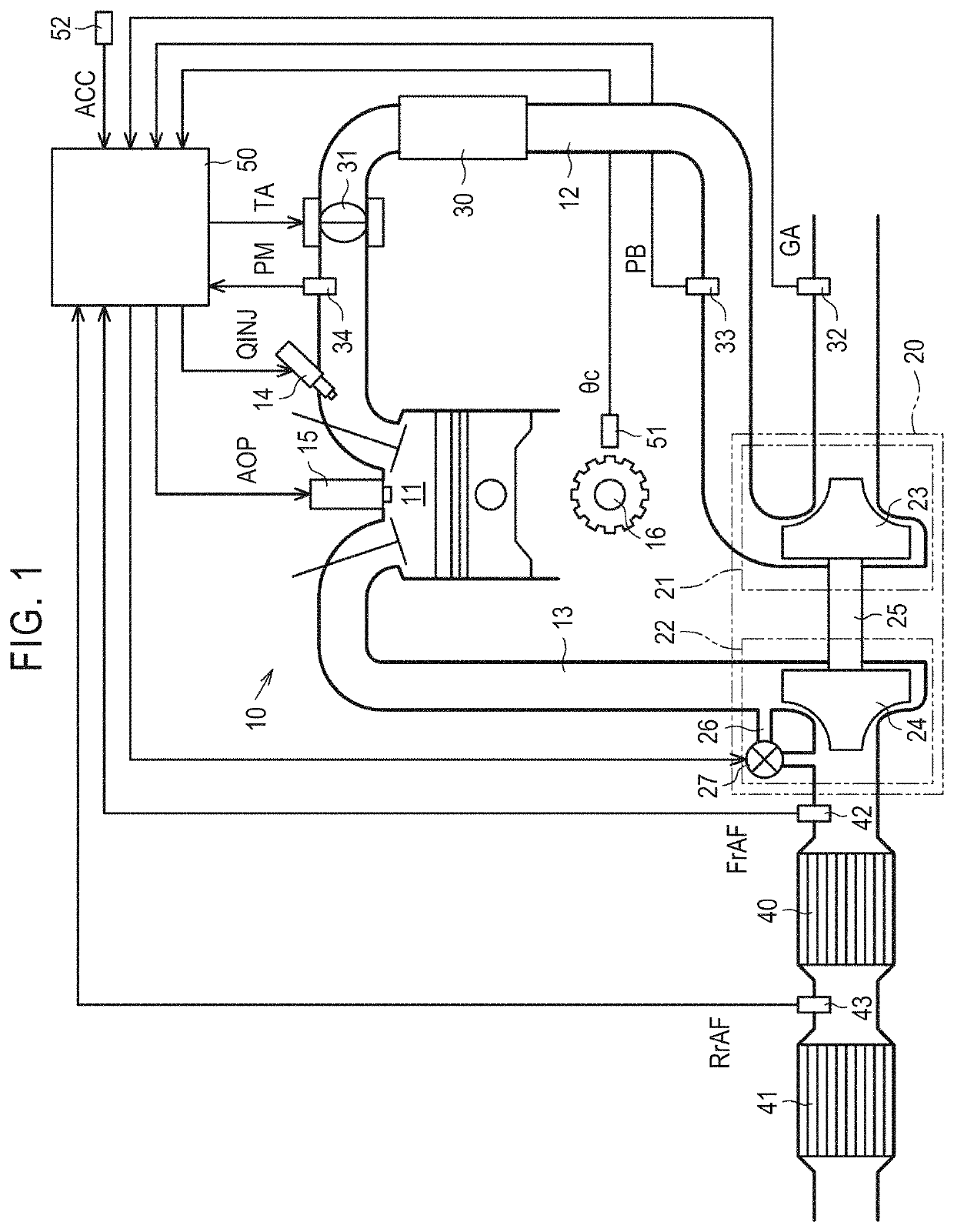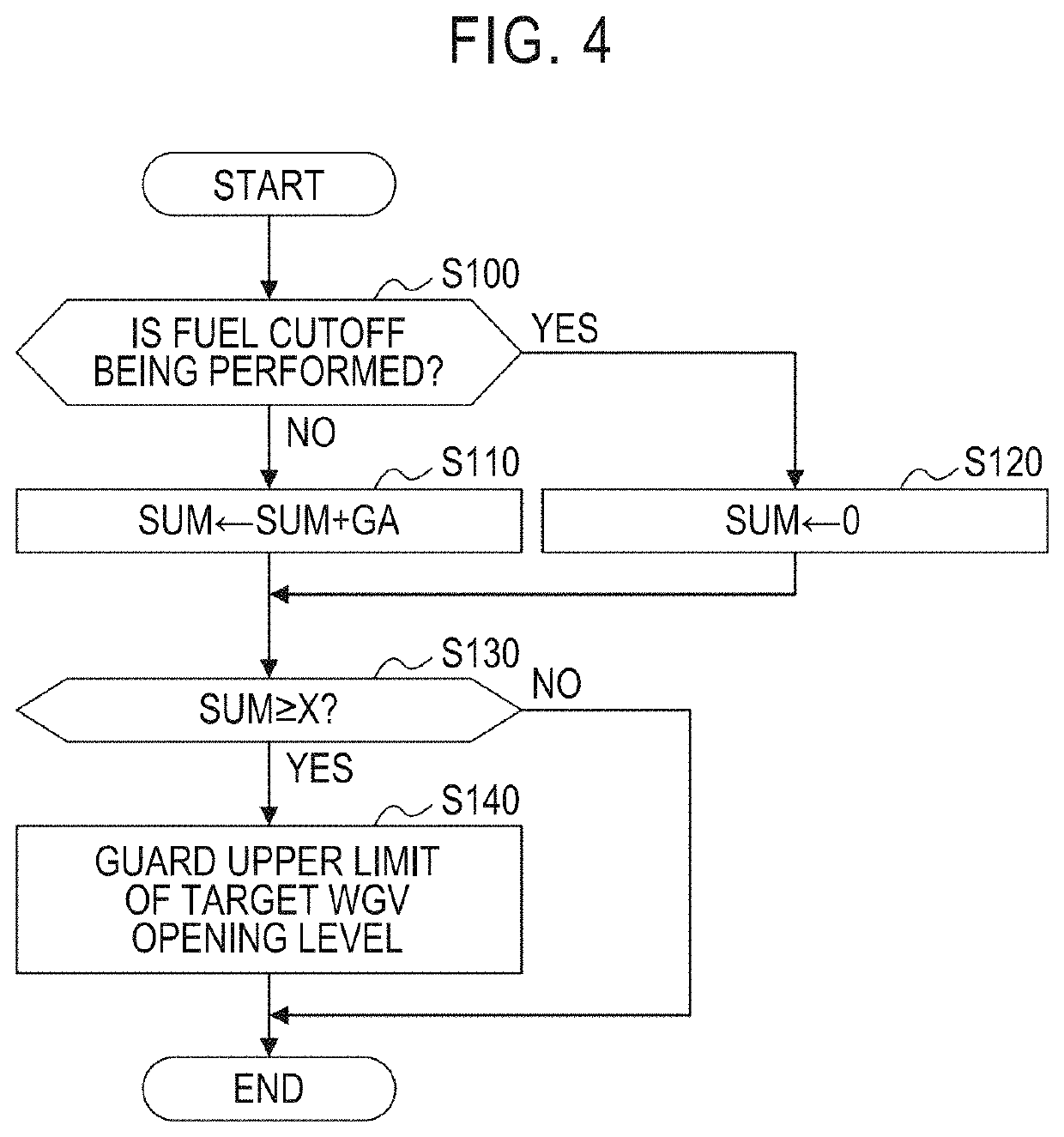Engine control device
a technology of engine control and catalyst device, which is applied in the direction of electric control, machines/engines, mechanical equipment, etc., can solve the problems of device cannot store surplus oxygen, and reduce the exhaust emission control capability of the catalyst device, so as to curb a deterioration in engine emissions, the effect of less likely reduction of the exhaust emission control performance of the catalyst devi
- Summary
- Abstract
- Description
- Claims
- Application Information
AI Technical Summary
Benefits of technology
Problems solved by technology
Method used
Image
Examples
first embodiment
[0030]Hereinafter, an engine control device according to a first embodiment will be described in detail with reference to FIGS. 1 to 12. The engine control device according to this embodiment is applied to an engine with a turbocharger which is mounted in a vehicle.
Configuration of Engine Control Device
[0031]A configuration of an engine 10 to which an engine control device 50 according to this embodiment is applied will be first described below with reference to FIG. 1. The engine 10 includes a combustion chamber 11 in which combustion of an air-fuel mixture is performed. The engine 10 includes an intake air passage 12 which is an introduction passage of intake air into the combustion chamber 11 and an exhaust passage 13 which is a discharge passage for exhaust gas from the combustion chamber 11. The engine 10 includes a plurality of cylinders and includes the combustion chamber 11 for each cylinder. Only one of a plurality of combustion chambers 11 is illustrated in FIG. 1. In the ...
second embodiment
[0077]An engine control device 50 according to a second embodiment will be described below in detail with additional reference to FIG. 11. The configuration of the engine control device 50 according to this embodiment is the same as the configuration in the first embodiment except details of the limiting process P6. In this embodiment and embodiments which will be described later, the same elements as in the aforementioned embodiment will be referred to by the same reference signs and detailed description thereof will not be repeated.
[0078]FIG. 11 illustrates a process routine associated with the limiting process P6 in the engine control device 50 according to this embodiment. The processes of Steps S100 to S140 in FIG. 11 are the same as the processes of Steps S100 to S140 in FIG. 4.
[0079]In the engine control device 50 according to this embodiment, before the limiting process P6, it is determined in Step S10 whether a state in which fluctuation of the engine load factor KL is smal...
third embodiment
[0081]An engine control device 50 according to a third embodiment will be described below in detail with additional reference to FIG. 12. The engine control device 50 according to this embodiment is mounted in a vehicle in which cruise control for automatically operating an accelerator to maintain a vehicle speed at a preset speed can be performed.
[0082]FIG. 12 illustrates a process routine associated with the limiting process P6 in the engine control device 50 according to this embodiment. The processes of Steps S100 to S140 in FIG. 12 are the same as the processes of Steps S100 to S140 in FIG. 4.
[0083]In the engine control device 50 according to this embodiment, before the limiting process P6, it is determined in Step S20 whether cruise control is being performed. When cruise control is not being performed (NO), the routine illustrated in FIG. 12 ends without performing the limiting process P6 in the current control cycle. On the other hand, when cruise control is being performed ...
PUM
 Login to View More
Login to View More Abstract
Description
Claims
Application Information
 Login to View More
Login to View More - R&D
- Intellectual Property
- Life Sciences
- Materials
- Tech Scout
- Unparalleled Data Quality
- Higher Quality Content
- 60% Fewer Hallucinations
Browse by: Latest US Patents, China's latest patents, Technical Efficacy Thesaurus, Application Domain, Technology Topic, Popular Technical Reports.
© 2025 PatSnap. All rights reserved.Legal|Privacy policy|Modern Slavery Act Transparency Statement|Sitemap|About US| Contact US: help@patsnap.com



